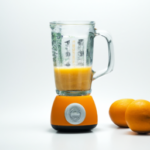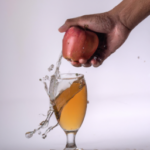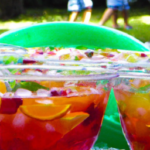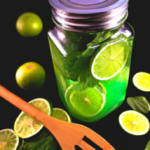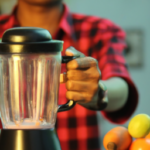Juice Tips and Tricks
How To Make Fizzy Juice

Making your own fizzy juice at home is a fun and delicious way to treat yourself to a refreshing and healthy beverage.
With just a few simple ingredients and equipment, you can create your own unique flavor combinations and control the level of carbonation to your liking.
To make fizzy juice, you will need some basic kitchen tools like a blender or juicer, as well as a carbonation method such as a soda stream or carbonation tablets.
By following a few easy steps, you can enjoy a fizzy drink that is free of added sugars and artificial flavors, and can be customized to your taste preferences.
So, let’s get started on this exciting and tasty adventure of making fizzy juice at home!
Key Takeaways
- Fizzy juice is a healthier alternative to store-bought sodas and can be customized for flavor and carbonation levels.
- Proper storage and serving involve using airtight glass bottles, sterilizing them before filling, and leaving space for carbonation and expansion.
- Homemade fizzy juice can be made using a SodaStream machine or natural carbonation method and can be enhanced with fruits, herbs, and spices.
- Making fizzy juice cost-effectively involves using fresh ingredients, infusing water with fruits and herbs, and buying ingredients in bulk.
What is Fizzy Juice?
Ready to learn about fizzy juice? Let’s dive in and discover what this bubbly drink is all about!
Fizzy juice, also known as carbonated juice, is a type of beverage that is infused with carbon dioxide gas, creating a bubbling sensation and a unique taste. The history of carbonation dates back to ancient times when natural springs containing carbon dioxide were used for their medicinal properties.
Carbonation is known to have some health effects, such as aiding digestion and reducing nausea. However, excessive consumption of carbonated beverages has been linked to health problems like tooth decay and osteoporosis. It’s important to consume carbonated beverages in moderation and be mindful of their effects on the body.
Now that we know what fizzy juice is and its effects on health, let’s move on to the ingredients required to make this delicious drink.
Ingredients Required
So, when it comes to making fizzy juice, there are a few key ingredients you’ll need.
First, you’ll need to choose your juice option – whether that be apple, orange, cranberry, or any other flavor you prefer.
Next, you’ll need carbonated water or soda water to add the fizz.
Finally, you may want to add a sweetener of your choice, such as honey or sugar, though this is optional depending on your personal taste.
Juice Options
First, you’re probably wondering what juices you can use to make fizzy juice – and coincidentally, almost any type of juice will work! You can use single fruit juices like apple, orange, or pineapple, or mix it up with juice combinations like cranberry and grape or mango and passionfruit. The possibilities are endless, so don’t be afraid to get creative with your flavor experimentation.
To make the most out of your fizzy juice, here are a few tips to keep in mind:
- Use fresh and natural juices instead of artificial ones to avoid unwanted chemicals and preservatives.
- Experiment with different ratios of juice and carbonated water to find your preferred level of sweetness and fizziness.
- Add a splash of lemon or lime juice to enhance the taste and balance out the sweetness.
- Remember to stir gently to avoid losing too much of the carbonation.
Now that you know your juice options, let’s move on to the next step: adding carbonated water or soda water to your mix.
Carbonated Water or Soda Water
To elevate the quality of your beverage, you may opt to add carbonated water or soda water to your chosen juice. Carbonated water is simply water that’s been infused with carbon dioxide gas under high pressure, creating a bubbly sensation.
Soda water, on the other hand, has added minerals and sometimes a small amount of sodium bicarbonate for flavor. If you don’t have access to store-bought carbonated or soda water, you can also DIY your own carbonation at home using a soda siphon or a carbonation cap. However, be sure to follow the instructions carefully to avoid any accidents.
Once you have your carbonated or soda water ready, simply mix it in with your juice to give it a fizzy kick. To further enhance the flavor of your fizzy juice, you can add a sweetener (optional).
Sweetener (Optional)
Like a bee drawn to nectar, I understand the desire to add a touch of sweetness to your fizzy drink. Adding sweetener is entirely optional, and there are various options to choose from, including sugar, honey, agave, or even artificial sweeteners. Depending on your preferences, you can add a small amount to enhance the flavor without making it too sugary.
When it comes to flavor options, you can get creative with your sweeteners. For example, you can add a dash of vanilla extract or a squeeze of fresh lemon juice to add a unique taste to your fizzy drink. It’s all about experimenting and finding the perfect balance of sweetness and flavor.
Moving on to the equipment needed, you’ll need a few things to make your fizzy juice a success.
Equipment Needed
One essential piece of equipment needed for making fizzy juice is a carbonation machine. This machine allows you to create your own carbonated water, which can then be added to your juice mixture. Carbonation machines come in various sizes and styles, but they all work in a similar way by adding carbon dioxide to water.
There are also budget-friendly options available for those who don’t want to spend too much money on this essential tool. Another important piece of equipment needed for making fizzy juice is a juicer. This machine allows you to extract juice from fruits and vegetables, which can then be mixed with your carbonated water.
When choosing a juicer, look for one that is easy to use and clean, and that can handle a variety of fruits and vegetables. With these essential tools, you can start preparing your fizzy juice and enjoy a refreshing and healthy drink.
Preparation Steps
Alright, now that we’ve got our equipment ready, it’s time to prepare our fizzy juice.
The first step is to mix the juice and carbonated water in a ratio of your choosing.
Then, if desired, you can add a sweetener to taste.
Finally, fill your bottles and seal them tightly to keep the carbonation intact.
Mixing Juice and Carbonated Water
To mix your juice and carbonated water, start by pouring the juice into a glass. Then, slowly pour the carbonated water on top while stirring gently to ensure the fizziness is evenly distributed. When choosing your flavor combinations, consider the acidity of the juice and how it will react with the carbonation.
Tart juices like lemon or lime will result in a stronger fizz, while sweeter juices like apple or grape will produce a milder carbonation. To achieve the perfect carbonation technique, make sure your carbonated water is chilled before adding it to the juice. This will ensure that the carbon dioxide in the water is more readily absorbed by the juice.
Additionally, avoid shaking the carbonated water vigorously as this can cause it to lose some of its fizziness. Instead, gently stir the mixture while adding the carbonated water. Once your juice and carbonated water are mixed, you can move on to adding sweetener (optional).
Adding Sweetener (Optional)
If you have a sweet tooth, feel free to add sweetener to your juice and carbonated water mixture. There are a variety of sweetener alternatives to choose from, such as agave nectar, stevia, or even fruit juices. Keep in mind that adding too much sweetener can overpower the natural flavors of the juice and make the drink too sugary. It’s important to adjust sweetness levels to your liking by starting with a small amount and gradually increasing until it reaches your desired taste.
Once you’ve added sweetener to your fizzy juice, it’s time to fill your bottles and seal them tightly. Remember to leave some space at the top of the bottle to allow for carbonation and expansion.
In the next section, we’ll go over the final steps to ensure that your fizzy juice stays carbonated and delicious.
Filling Bottles and Sealing
After adding sweetener to the juice, it’s time to fill your bottles and get them ready for carbonation. Before filling the bottles, it’s essential to sterilize them properly to avoid any contamination that may affect the taste of your fizzy juice. You can sterilize the bottles by boiling them in water for ten minutes or using a sterilizing solution.
Once the bottles are sterilized and dried, you can fill them up with the juice, leaving about an inch of space at the top of the bottle to allow for carbonation. After filling the bottles, it’s crucial to seal them tightly to prevent any carbon dioxide from escaping. You can use a bottle capper or a cap that comes with a rubber seal to ensure a tight fit.
Now that your bottles are filled and sealed, it’s time to move on to the next step: carbonation options.
-
Check carbonation levels: Before proceeding with carbonation, it’s crucial to check the carbonation levels of the juice. If the juice is too sweet, it may not carbonate well, and if it’s too acidic, it may carbonate too quickly.
-
Natural carbonation: One way to carbonate your juice is to let it sit at room temperature for a few days. The natural yeast in the juice will convert the sugar into carbon dioxide, creating natural carbonation.
-
Force carbonation: Another option is to force carbonate the juice using a carbonation machine or a soda siphon. This method involves injecting carbon dioxide into the juice under pressure, creating carbonation quickly.
-
Adjust carbonation levels: Finally, it’s essential to adjust the carbonation levels according to your taste preferences. If the juice is too fizzy, you can release some of the carbon dioxide by opening the bottle cap slightly. If it’s not fizzy enough, you can add more carbon dioxide using a carbonation machine or soda siphon.
Now that you know the different carbonation options, it’s time to choose the method that works best for you and enjoy your homemade fizzy juice!
Carbonation Options
When it comes to carbonating my homemade fizzy juice, I have two main options: using a SodaStream machine or using the natural carbonation method.
Personally, I prefer the convenience and consistency of the SodaStream machine. It allows me to easily control the level of carbonation in my drinks and ensures that every batch is fizzy and refreshing.
However, for those who prefer a more hands-on approach, the natural carbonation method can be a fun and rewarding option to try.
Using a SodaStream Machine
To use your SodaStream machine, simply fill the bottle with your favorite juice, attach it to the machine, and press the button to carbonate it. The SodaStream machine provides a more convenient and efficient way to carbonate juice compared to other carbonation methods. It also allows you to control the level of carbonation you want, from lightly sparkling to heavily fizzy.
However, maintaining and cleaning your SodaStream machine is crucial to ensure its longevity and optimal performance. Here are three tips to keep your SodaStream machine in top shape:
-
Regularly clean the carbonating bottle and the machine’s nozzle with warm water and mild soap to prevent clogging and buildup.
-
Replace the carbonating bottle after every two years of use or when it shows signs of wear and tear to maintain the quality of your fizzy juice.
-
Store the carbonator in a cool and dry place, away from direct sunlight, to prevent any damage or leakage.
Now that you know how to use and maintain your SodaStream machine, let’s explore another option for carbonating your juice – the natural carbonation method.
Natural Carbonation Method
Did you know there’s a natural way to carbonate your favorite beverages without using a machine? It’s true! There are several DIY carbonation techniques that can be used to achieve a fizzy drink.
The most common method involves the use of yeast. Yeast is a natural carbonation agent that converts sugar into carbon dioxide, which creates the bubbles in your drink. To use this method, simply mix your desired juice or other beverage with sugar and a small amount of yeast, then let it sit in a sealed container for several hours. The longer you let it sit, the more carbonated it will become.
It’s important to note that natural carbonation is different from artificial carbonation, which is what you get with a SodaStream or other carbonating machine. Artificial carbonation involves adding carbon dioxide gas to your drink, while natural carbonation relies on the natural process of fermentation to create the bubbles.
While both methods can be effective, many people prefer natural carbonation because it’s a more traditional and authentic way to make fizzy drinks.
Now that you know how to naturally carbonate your drinks, let’s move on to the next step: storing and serving your fizzy juice.
Storing and Serving
After refrigerating the fizzy juice, it’s time to pour it into glasses and watch the bubbles dance on the surface. To make the presentation more appealing, I recommend using colorful straws and garnishes like slices of fruit or herbs.
Here are three tips to keep in mind when storing and serving your fizzy juice:
-
Use glass bottles or jars with airtight lids to store the juice. This will help preserve the carbonation for longer periods of time.
-
Before serving, make sure to give the bottle a gentle shake to distribute the carbonation evenly throughout the juice.
-
Serve the fizzy juice chilled to enhance the refreshing taste and fizziness.
Now that we’ve covered the proper way to store and serve fizzy juice, let’s move on to the exciting world of variations and flavors.
Variations and Flavors
Now let’s talk about how to add a variety of flavors to your fizzy juice. Personally, I like to experiment with adding different fruits to my carbonated water. It’s a great way to add natural sweetness and a burst of flavor without the added sugar.
Additionally, adding herbs and spices like mint, ginger, or basil can give your fizzy juice a unique and refreshing taste. Overall, the possibilities for creating your own customized fizzy juice are endless.
Fizzy Juice with Fruits
First, pick fresh and flavorful fruits like strawberries, raspberries, or peaches to create a fizzy and fruity juice that will tantalize your taste buds. Fruit combinations are endless, so don’t be afraid to experiment with different flavors like blueberry and lemon or mango and pineapple.
The possibilities are endless when it comes to creating a unique and refreshing fizzy juice that will leave you feeling satisfied and refreshed. To make a fizzy fruit juice, start by blending the fruit with a bit of water until it forms a smooth puree.
Next, add some sugar or honey to taste, and stir until dissolved. Finally, add some sparkling water or soda water to the mixture, and stir gently to combine.
Serve over ice and garnish with fresh fruit for an extra burst of flavor. With just a few simple steps, you can create a delicious and refreshing fizzy juice that’s perfect for any occasion.
Next, let’s move on to exploring the world of fizzy juice with herbs and spices.
Fizzy Juice with Herbs and Spices
Get ready to elevate your fizzy drink game by adding herbs and spices to your fruity concoctions. Herbal infusions and spice blends can add complexity and depth to your beverage, taking it to the next level.
Before you start experimenting with different flavor combinations, it’s important to understand the basics of herbal infusions and spice blends.
Herbal infusions involve steeping fresh or dried herbs in hot water to extract their flavor and aroma. Some popular herbs for infusions include mint, basil, and lavender.
Spice blends, on the other hand, involve mixing different spices together to create a unique flavor profile. Some popular spices for blends include cinnamon, ginger, and cardamom.
Once you have your infusion or blend, you can mix it with your favorite fruit juice and add carbonated water for that fizzy kick. Don’t be afraid to experiment with different flavor combinations to find your perfect match.
Transitioning into the subsequent section about tips and tricks, remember that the amount of infusion or blend needed may vary based on personal preference, so start with small amounts and adjust accordingly.
With these tips in mind, you’re ready to create your own fizzy juice masterpiece.
Tips and Tricks
You’re probably a pro at drinking fizzy drinks, but did you know that making your own fizzy juice can be just as easy and way more satisfying? Here are some tips and tricks to make the process even smoother:
- Experiment with different carbonation techniques to find your favorite level of fizziness.
- Don’t be afraid to try unique flavor combinations like cucumber and mint or strawberry and basil.
- Use fresh ingredients to enhance the taste and nutritional value of your fizzy juice.
- Keep your equipment clean and well-maintained for optimal results.
By following these tips, you can create a fizzy juice that perfectly suits your preferences.
Plus, making your own fizzy juice at home has numerous benefits, such as saving money, reducing waste, and controlling the ingredients that go into your drink. So why not give it a try and see how delicious and refreshing homemade fizzy juice can be?
Benefits of Making Fizzy Juice at Home
Making fizzy juice at home can be a cost-effective way to enjoy a healthier alternative to store-bought sodas. By controlling the ingredients and sugar content, it’s possible to create a beverage that fits your dietary needs and preferences.
Plus, with customizable options like adding fruit or herbs, you can create unique flavors that can’t be found in any store.
Cost-Effective
Saving money on your fizzy juice ingredients doesn’t have to mean sacrificing taste or quality. There are simple ways to make your own fizzy juice without breaking the bank. Here are some budget-friendly ingredients and DIY carbonation alternatives that can help you save money while still enjoying your favorite fizzy drinks:
- Use fresh fruits and herbs: Fresh fruits and herbs are not only healthier, but they’re also cheaper than store-bought juices. You can easily infuse water with your favorite fruits and herbs to create a refreshing and flavorful drink.
- Try soda water instead of carbonated water: Soda water is a cheaper alternative to carbonated water. You can easily make soda water at home using a soda siphon or a soda maker.
- Make your own syrups: Instead of buying expensive syrups, you can easily make your own at home using sugar, water, and your favorite fruits or herbs.
- Use reusable bottles: Instead of buying expensive bottled drinks, invest in reusable bottles that you can fill with your own homemade fizzy juice.
- Buy in bulk: Buying ingredients in bulk can save you money in the long run. You can even split the cost with friends or family to save even more.
Making your own fizzy juice at home not only saves you money, but it can also be a healthier alternative. In the next section, I’ll discuss some ways to make your fizzy juice even healthier without sacrificing taste.
Healthier Alternative
Feeling guilty about indulging in sugary drinks? Consider the nutritional benefits of incorporating natural ingredients into your favorite carbonated beverages.
By making your own fizzy juice, you can control the amount of sugar and additives, making it a healthier alternative to store-bought sodas. Not only can you reduce your sugar intake by making your own fizzy juice, but you can also add in beneficial ingredients such as fresh fruit, herbs, and even superfoods like chia seeds or spirulina.
These ingredients can provide essential vitamins, minerals, and antioxidants that aren’t typically found in traditional sodas. So, why not try making your own fizzy juice today and enjoy the health benefits that come with it? Don’t worry, there are plenty of customizable options to make it just the way you like it.
Customizable Options
You can easily elevate your homemade carbonated beverages to the next level by adding your favorite fruits, herbs, or even spices to create a unique and personalized flavor profile. Customizable options are what make fizzy juice an exciting and fun drink to experiment with.
There are endless possibilities when it comes to flavor combinations, and you can let your creativity run wild. Here are some ideas to inspire you:
-
Fruity combinations: Mix and match your favorite fruits to create a refreshing and fruity fizzy juice. Try combining strawberries and kiwis, watermelon and lime, or mango and pineapple.
-
For a tropical twist, add coconut water to your fizzy juice.
-
For a boost of antioxidants, add a handful of blueberries or raspberries to your drink.
-
Herbal and Spicy combinations: Herbs and spices can add a unique flavor and aroma to your fizzy juice. Try adding ginger, mint, basil, or rosemary to your drink.
-
For a spicy kick, add a pinch of cayenne pepper or a dash of hot sauce to your fizzy juice.
-
For a refreshing twist, add cucumber slices or lemon balm to your drink.
By adding your own twist to your fizzy juice, you can enjoy a drink that is tailored to your taste preferences. Customizable options allow you to experiment with different flavor combinations and create a drink that is uniquely yours. So, go ahead and try out different ingredients until you find your perfect fizzy juice recipe.
Frequently Asked Questions
How long does it take to carbonate the juice?
It depends on the carbonation time variability of your carbonation method, but typically it takes about 2-4 hours to carbonate juice. The benefits of sparkling water include improved digestion, hydration, and a refreshing taste.
Can I use any type of fruit to make fizzy juice?
Yes, any type of fruit can be used for making fizzy juice. Juice selection is based on personal preference, and flavor options are endless. It’s important to choose fresh, ripe fruit and use a quality carbonation system for best results.
How can I adjust the level of carbonation in my fizzy juice?
Adjusting the level of carbonation in fizzy juice involves experimenting with carbonation techniques, such as adjusting pressure or temperature. Flavor infusion can also affect carbonation. It’s like conducting a symphony, finding the perfect balance for a delightful drink.
Is it possible to make a sugar-free version of fizzy juice?
It is possible to make a sugar-free fizzy drink. Benefits of sugar-free drinks include reducing sugar intake and maintaining a healthy weight. Tips for reducing sugar intake in drinks include using natural sweeteners and opting for carbonated water instead of soda.
Can I use a soda maker to carbonate my juice instead of a carbonation machine?
When it comes to carbonating juice with a soda maker, there are alternatives to traditional carbonation machines. While a soda maker can work, it may not produce the same level of carbonation. Pros include affordability and convenience, but cons include potential for inconsistent results.
Conclusion
Well, congratulations! You’ve just learned how to make fizzy juice at home. You now possess the skills to impress your friends and family with your homemade carbonated drinks. Who needs to buy expensive soda when you can make your own? Not me, that’s for sure.
But let’s be real, making fizzy juice is not for everyone. It takes time and effort, and sometimes things can go wrong. So, if you’re feeling lazy or don’t want to deal with the hassle, just stick to buying ready-made soda.
But for those of you who want to be adventurous and try something new, go ahead and give it a shot! Who knows, you might just discover a new favorite drink.
Cindy thoroughly researches juicing trends, techniques, and recipes to provide readers with practical advice and inspiration. Her writing style is accessible, engaging, and designed to make complex concepts easy to understand. Cindy’s dedication to promoting the advantages of juicing shines through her work, empowering readers to make positive changes in their lives through the simple act of juicing.
Juice Tips and Tricks
How to Make Aloe Vera Juice Taste Better

Tired of the strong flavor of aloe vera juice? No problem, we’ve got the answer for you.
In this article, we’ll share some tips and tricks to make your aloe vera juice taste better. We have tried and tested various methods to enhance the flavor without compromising the health benefits.
From choosing the right juice to adding natural sweeteners and infusing with fruits and herbs, we’ve got all the information you need to transform your aloe vera juice into a delightful and refreshing beverage.
Let’s dive in!
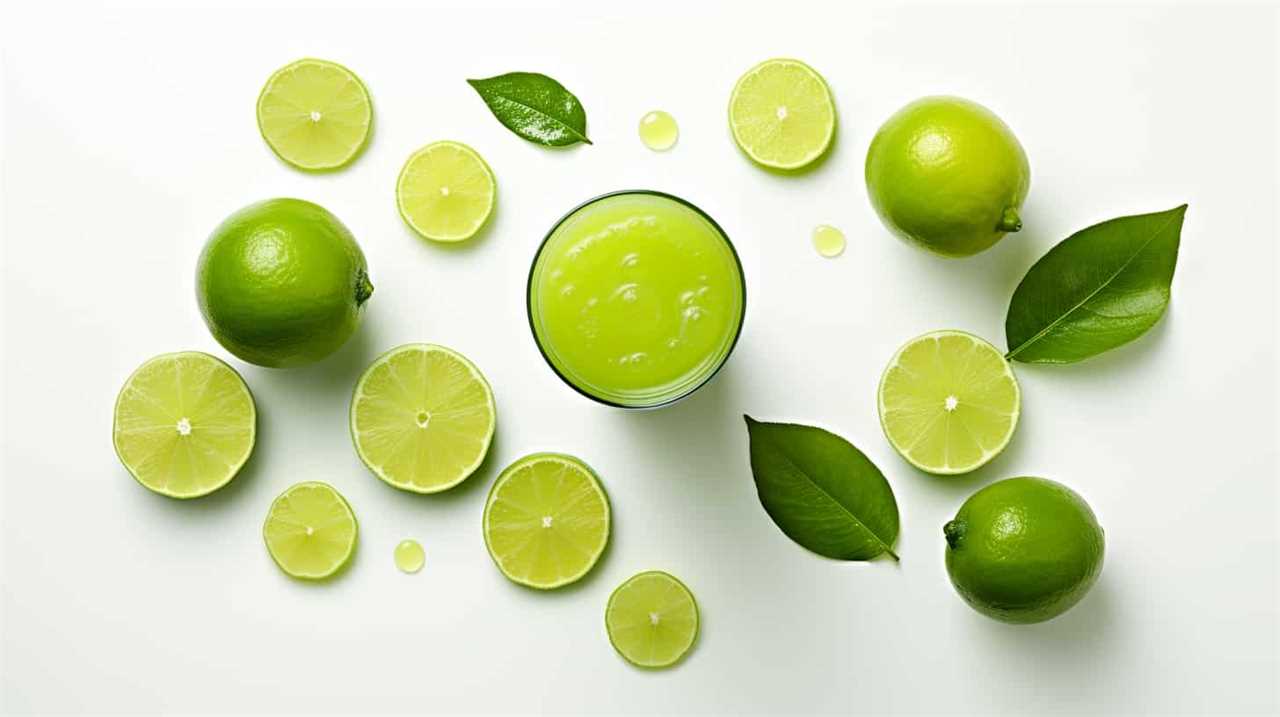
Key Takeaways
- Choose a reputable brand of aloe vera juice that prioritizes quality and uses organic, pure aloe vera.
- Avoid brands that contain added sugars or artificial ingredients.
- Use natural sweeteners like honey, agave syrup, or stevia to enhance the taste of aloe vera juice.
- Experiment with adding fruits, herbs, and other juices to create unique flavor combinations and enhance the health benefits of aloe vera juice.
Choosing the Right Aloe Vera Juice
We can enhance our experience with aloe vera juice by selecting the right brand and type for our preferences. When it comes to finding a reputable brand, it’s important to do some research and read reviews from other consumers. Look for brands that prioritize quality and use organic, pure aloe vera without any added sugars or artificial ingredients. Understanding the health benefits of aloe vera juice is also crucial in making the right choice. Aloe vera is known for its soothing properties, aiding digestion, promoting skin health, and boosting the immune system. By choosing a high-quality brand, we can ensure that we’re getting the maximum benefits from our aloe vera juice.
Now that we know how to choose the right brand, let’s move on to the next step of adding natural sweeteners.
Adding Natural Sweeteners
To enhance the flavor of our aloe vera juice, we can add natural sweeteners such as honey or agave syrup. Using alternative sweeteners not only adds sweetness but also brings unique flavors to the juice. Here are some options to consider:
- Stevia: A natural sweetener derived from the Stevia plant, it’s a zero-calorie alternative to sugar.
- Maple Syrup: This natural sweetener adds a rich and earthy flavor to the aloe vera juice.
- Dates: Pureed dates can be used to sweeten the juice while also providing essential nutrients like fiber.
In addition to using alternative sweeteners, we can enhance the flavor of aloe vera juice by adding spices and extracts. Cinnamon, ginger, or vanilla extract can add warmth and depth to the taste. By experimenting with different combinations of these natural sweeteners, spices, and extracts, we can create a flavor profile that suits our preferences.
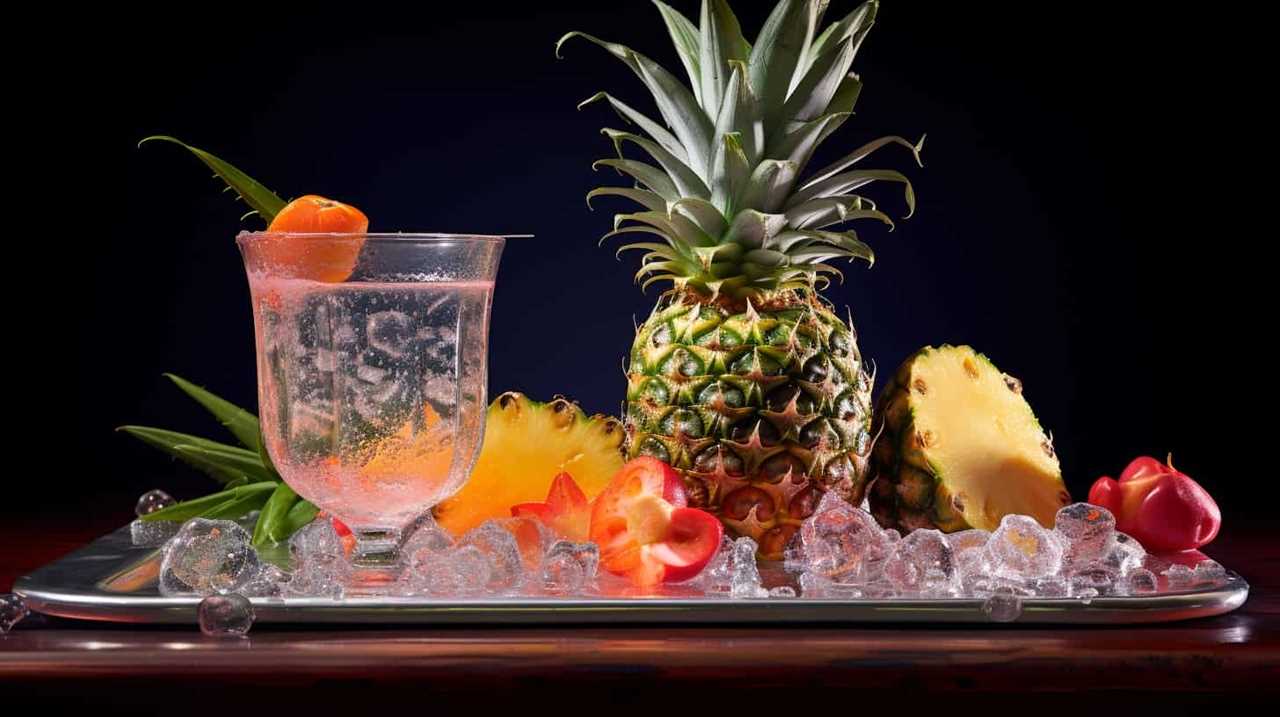
Now, let’s move on to the next section and learn how to infuse aloe vera juice with fruits and herbs to further enhance its taste.
Infusing With Fruits and Herbs
As we explore ways to make our aloe vera juice taste better, one option to consider is infusing it with fruits and herbs. Creating unique aloe vera blends by adding fruits and herbs not only enhances the flavor but also adds a touch of freshness and complexity to the juice.
Fruits like strawberries, pineapple, or citrus can add a burst of sweetness, while herbs like mint, basil, or ginger can provide a subtle yet refreshing twist. Exploring the benefits of herbal infusions can also be beneficial for our health. For example, adding a few sprigs of lavender can promote relaxation and reduce stress. Additionally, infusing aloe vera juice with rosemary can aid digestion and boost the immune system.
Blending With Other Juices
Let’s try mixing aloe vera juice with different fruit juices to create delicious and refreshing blends. Blending aloe vera juice with other fruits not only enhances its taste but also adds nutritional benefits to your drink. Here are three fruit juices that you can mix with aloe vera juice:

- Orange juice: Combining aloe vera juice with orange juice not only adds a tangy flavor but also boosts your intake of vitamin C, which is essential for a strong immune system.
- Pineapple juice: Mixing aloe vera juice with pineapple juice creates a tropical blend that isn’t only refreshing but also helps in digestion. Pineapple contains bromelain, an enzyme that aids in breaking down proteins and promoting better digestion.
- Watermelon juice: Blending aloe vera juice with watermelon juice creates a hydrating and refreshing combination. Watermelon is rich in water content and contains electrolytes that can help replenish your body’s fluids.
Experimenting With Flavor Combinations
While we can try various flavor combinations with aloe vera juice, it’s important to find the right balance to enhance its taste. Experimenting with different flavors can’t only make the juice more enjoyable but also enhance its health benefits.
Aloe vera juice is known for its numerous health benefits, such as boosting digestion, promoting hydration, and supporting the immune system. By adding complementary flavors, we can create a refreshing summer drink that not only tastes great but also provides a nutritional boost.
Some popular flavor combinations include mixing aloe vera juice with citrus fruits like lemon or orange, adding a splash of coconut water for a tropical twist, or combining it with cucumber and mint for a refreshing and cooling effect.
Don’t be afraid to get creative and find the flavor combination that suits your taste buds best!
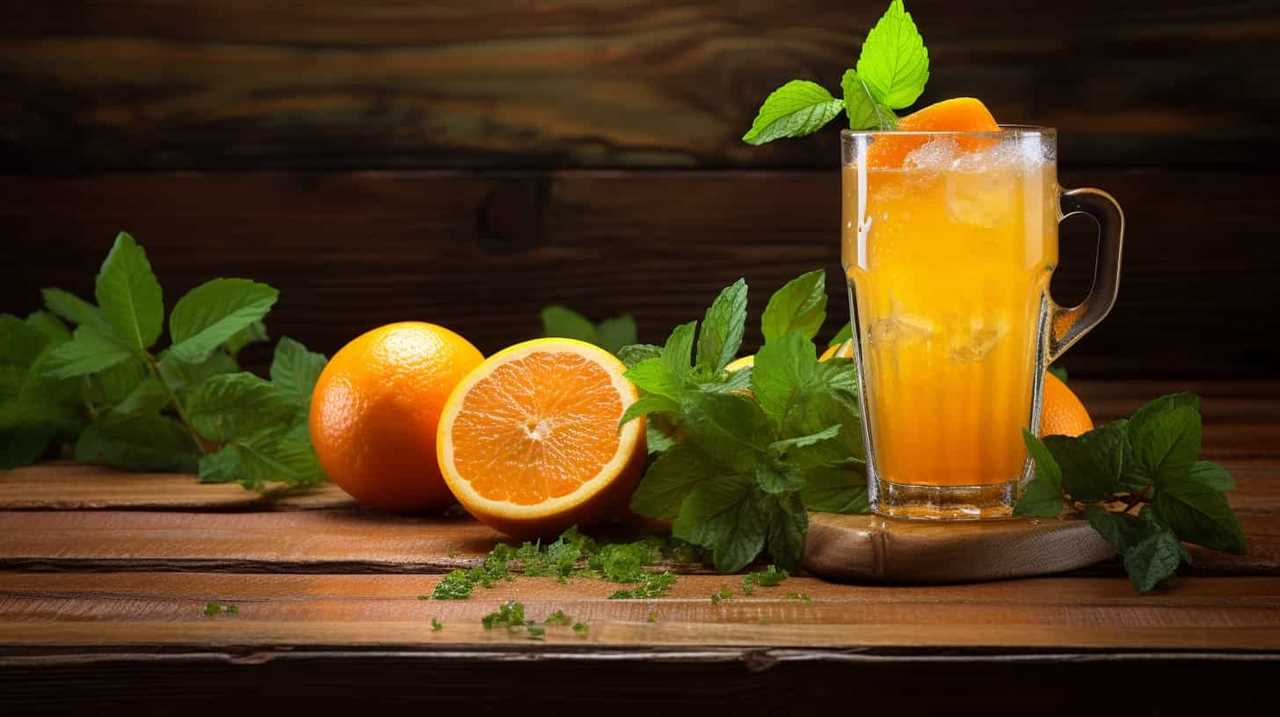
Frequently Asked Questions
Can I Use Store-Bought Aloe Vera Gel Instead of Fresh Aloe Vera for Making Juice?
Yes, you can use store-bought aloe vera gel instead of fresh aloe vera for making juice. However, it’s important to note that fresh aloe vera juice may have more health benefits due to its higher nutrient content.
How Long Can I Store Aloe Vera Juice in the Refrigerator?
Aloe vera juice can be stored in the refrigerator for up to a week. Refrigeration helps maintain the longevity and freshness of the juice, preserving its beneficial properties.
Can Aloe Vera Juice Help With Digestive Issues?
Aloe vera juice can potentially help with digestive issues when taken in appropriate dosages. However, it is important to note that there may be potential side effects. It is always best to consult with a healthcare professional before starting any new supplement regimen.
Can I Use Artificial Sweeteners Instead of Natural Sweeteners in My Aloe Vera Juice?
Using artificial sweeteners in aloe vera juice may affect its taste and potential health benefits. However, natural sweeteners like honey or stevia can enhance the flavor without compromising its nutritional value.
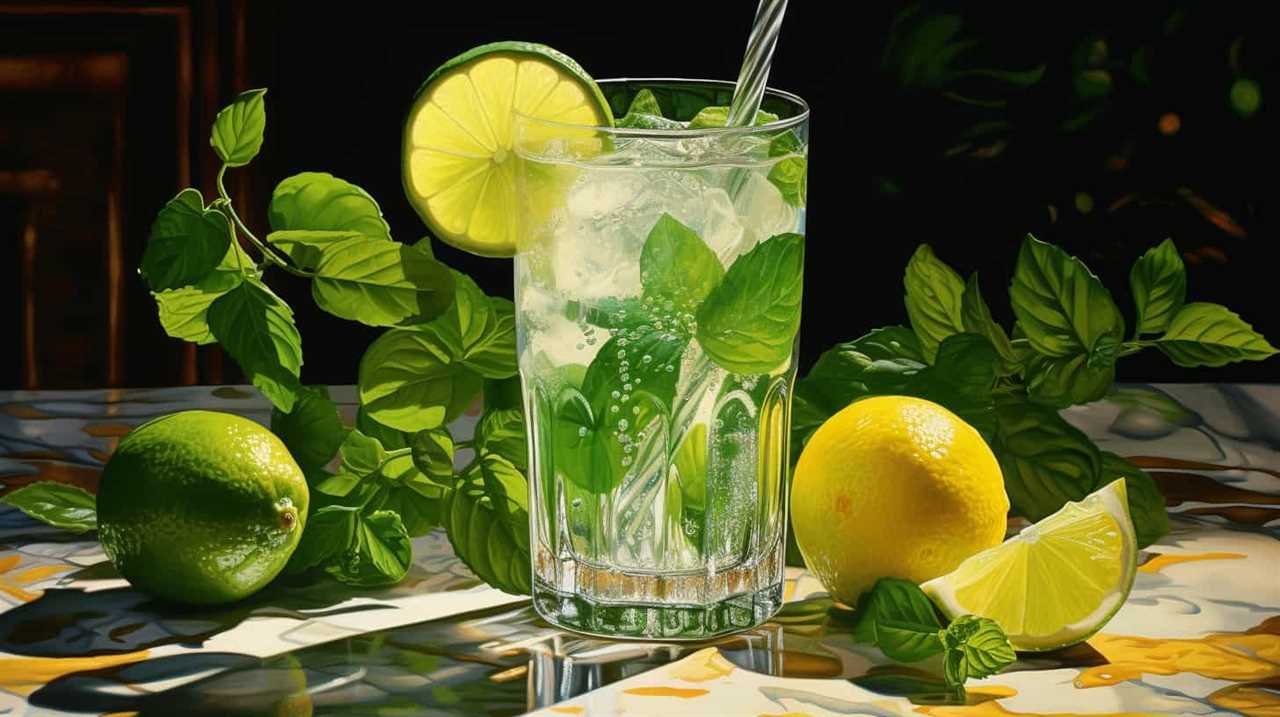
Is It Safe to Drink Aloe Vera Juice Every Day?
Drinking aloe vera juice daily can have numerous benefits, such as improving digestion and boosting the immune system. However, consuming it regularly may also lead to potential side effects like diarrhea or stomach cramps.
Conclusion
In conclusion, making aloe vera juice taste better is easy and enjoyable.
By choosing the right aloe vera juice and adding natural sweeteners, infusing with fruits and herbs, blending with other juices, and experimenting with flavor combinations, you can create a delightful and refreshing drink.
So go ahead and unleash your creativity in the kitchen, and transform your aloe vera juice into a sensational elixir that will transport your taste buds to paradise.
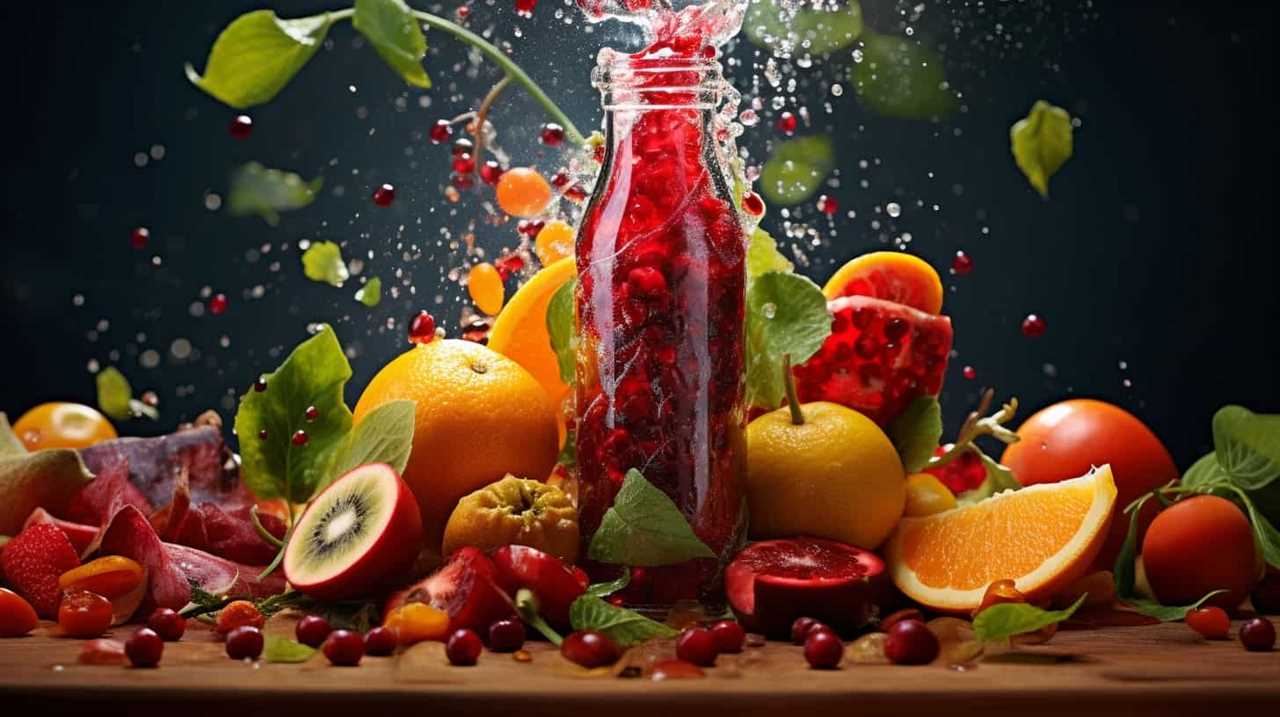
Susannah expertise lies in researching and compiling evidence-based content on juicing, nutrition, and overall health. She is committed to ensuring that The Juicery World offers accurate, up-to-date, and trustworthy information to empower readers to take control of their health. Susannah’s goal is to inspire individuals to embrace juicing as a way to nourish their bodies and live their best lives.
Juice Tips and Tricks
How to Make a Glass of Lemonade With Bottled Lemon Juice
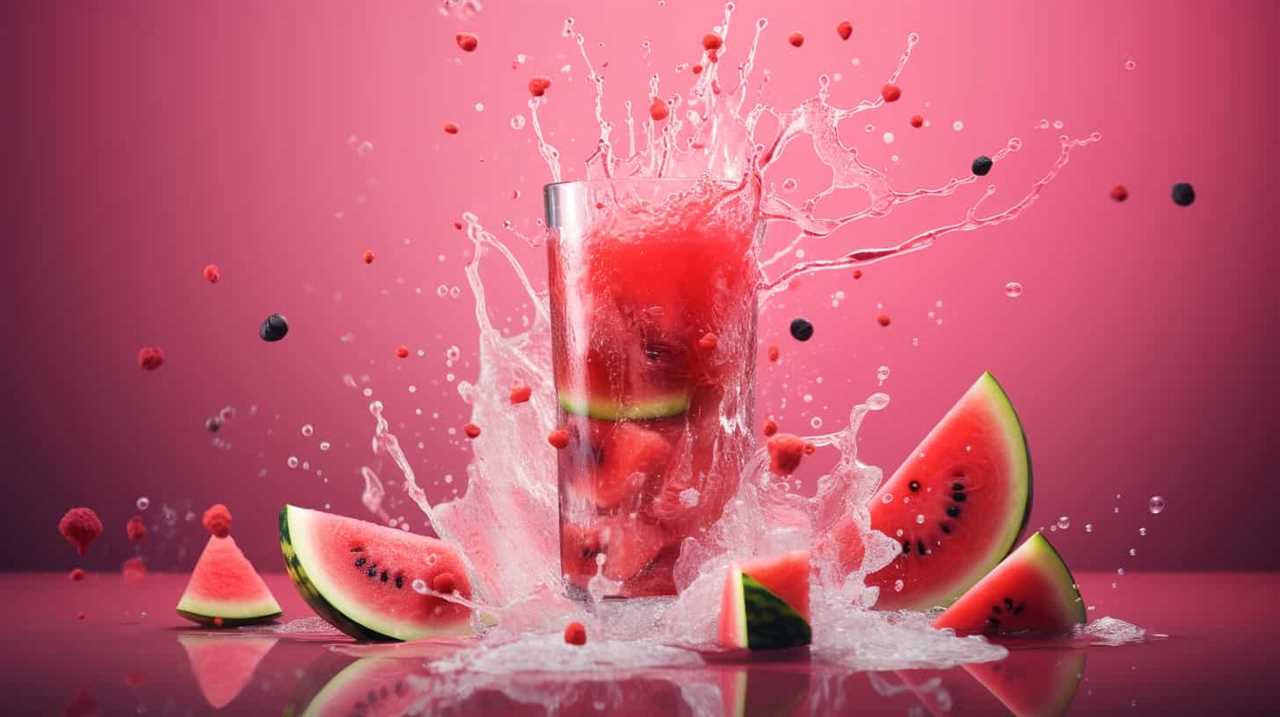
Are you craving a cool glass of lemonade to quench your thirst? Look no further! Try out our perfect recipe using bottled lemon juice that will surely please your taste buds.
In this article, we’ll guide you through the process of creating a tangy and sweet concoction that will leave you feeling refreshed and satisfied.
So grab your ingredients and let’s get started on this delightful journey of serving ourselves and others a glass of pure lemony goodness.
Key Takeaways
- Consider the storage of the bottled lemon juice (dark glass or plastic bottles, protect from light exposure, check expiration date)
- Choose a suitable pitcher and fresh lemons for enhanced flavor
- Store the lemonade concentrate in the refrigerator to maintain freshness
- Adjust the sweetness and tartness to taste with sugar or more lemon juice, and experiment with different sweeteners or additional flavors.
Choosing the Right Bottled Lemon Juice
What are the key factors we should consider when selecting the right bottled lemon juice for our lemonade?

One important factor is how the lemon juice is stored. Look for bottles that are made of dark glass or plastic, as they help protect the juice from light exposure, which can degrade its quality. It’s also important to check the expiration date to ensure freshness.
Another benefit of using bottled lemon juice is convenience. It saves time and effort compared to squeezing fresh lemons. Additionally, bottled lemon juice provides consistent flavor, as the acidity levels are standardized.
When selecting a brand, consider reading reviews and checking for certifications, such as organic or non-GMO.
Gathering the Necessary Ingredients and Tools
How can we gather all the necessary ingredients and tools to make a glass of lemonade with bottled lemon juice?
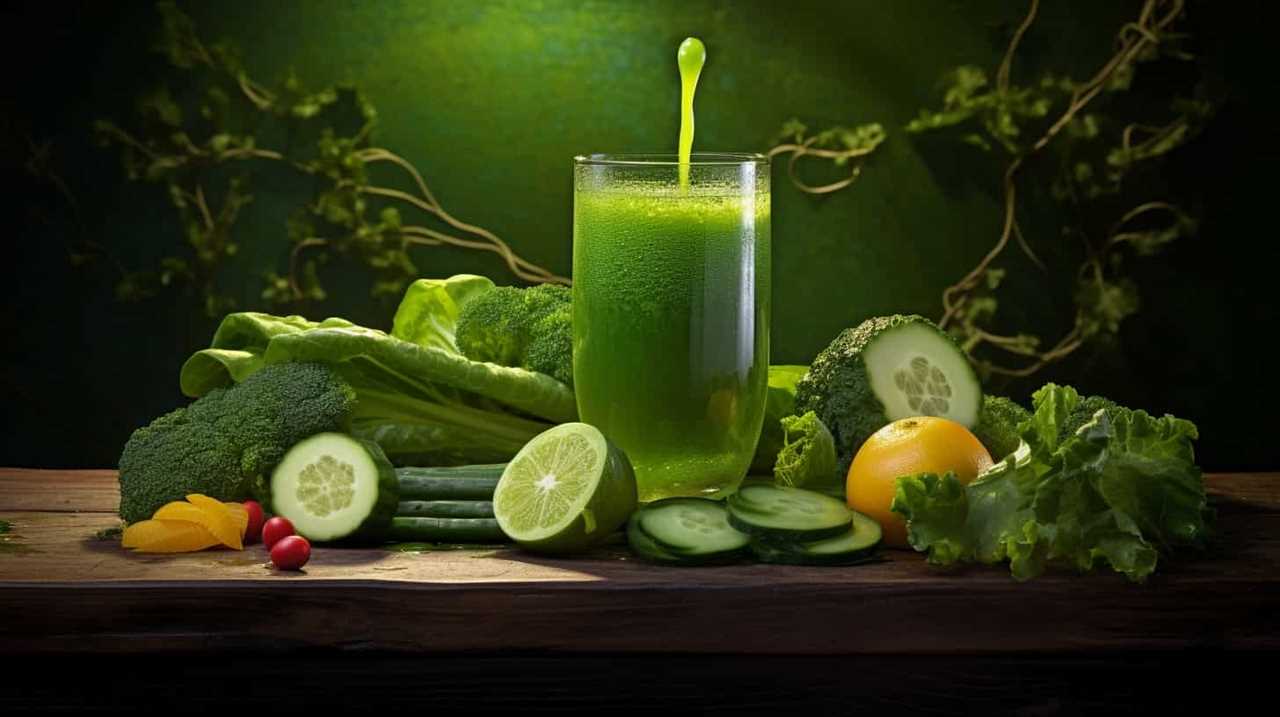
It’s important to start with the right pitcher. Look for a pitcher that’s made of glass or BPA-free plastic, as these materials won’t affect the taste of the lemonade. The pitcher should also have a lid or cover to keep the lemonade fresh and prevent spills.
Now, let’s talk about the lemons. While bottled lemon juice is convenient, using fresh lemons instead can elevate the flavor of your lemonade. Choose lemons that are firm and have a bright yellow color. Give them a gentle squeeze to ensure they’re juicy. To extract the juice, you’ll need a citrus juicer or a reamer. These tools make it easy to get every last drop of juice from the lemons.
Mixing the Lemonade Concentrate
To start mixing the lemonade concentrate, we’ll slowly pour the bottled lemon juice into the pitcher. It’s important to choose the right container for the lemonade concentrate. A pitcher with a lid or a tightly sealed container will help maintain the freshness and prevent any spills or leaks. Once the lemon juice is in the pitcher, we can move on to the next step of adding water and sweetener.
To ensure the lemonade concentrate stays fresh, it’s essential to store it properly. Keep the pitcher in the refrigerator to maintain its cool temperature and prevent any bacteria growth. If you have any leftover concentrate, transfer it to a smaller container with an airtight lid before refrigerating. This will help retain its flavor and prevent any contamination.
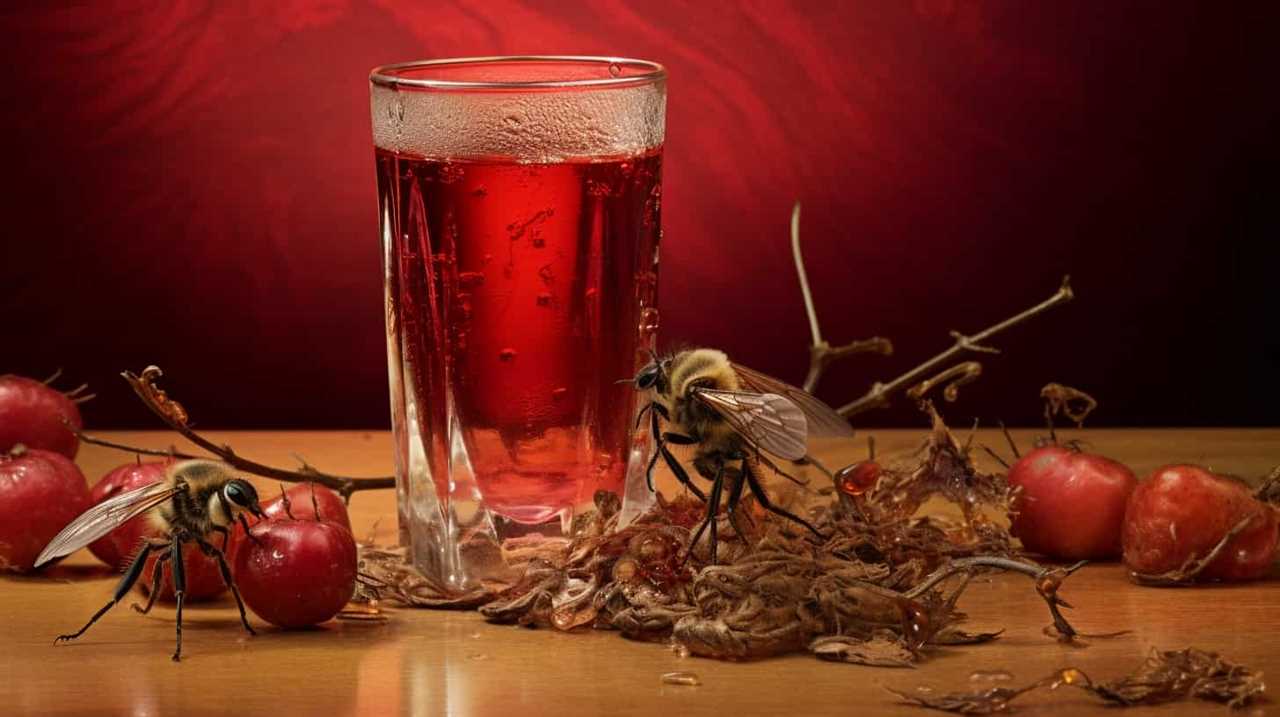
Now that we’ve mixed the lemonade concentrate, it’s time to adjust the sweetness and tartness to taste.
Adjusting the Sweetness and Tartness to Taste
We can adjust the sweetness and tartness of the lemonade to taste by adding more sugar or lemon juice, respectively. If you prefer a sweeter lemonade, simply add more sugar and stir until it dissolves completely. You can experiment with different sweeteners such as honey or agave syrup to find the perfect balance of sweetness.
On the other hand, if you want a tangier lemonade, add more lemon juice gradually, tasting as you go until it reaches your desired level of tartness.
Additionally, you can get creative with your lemonade by adding flavors like fresh mint leaves or a hint of lavender. These additions can elevate the flavor profile and create a more refreshing and unique experience.
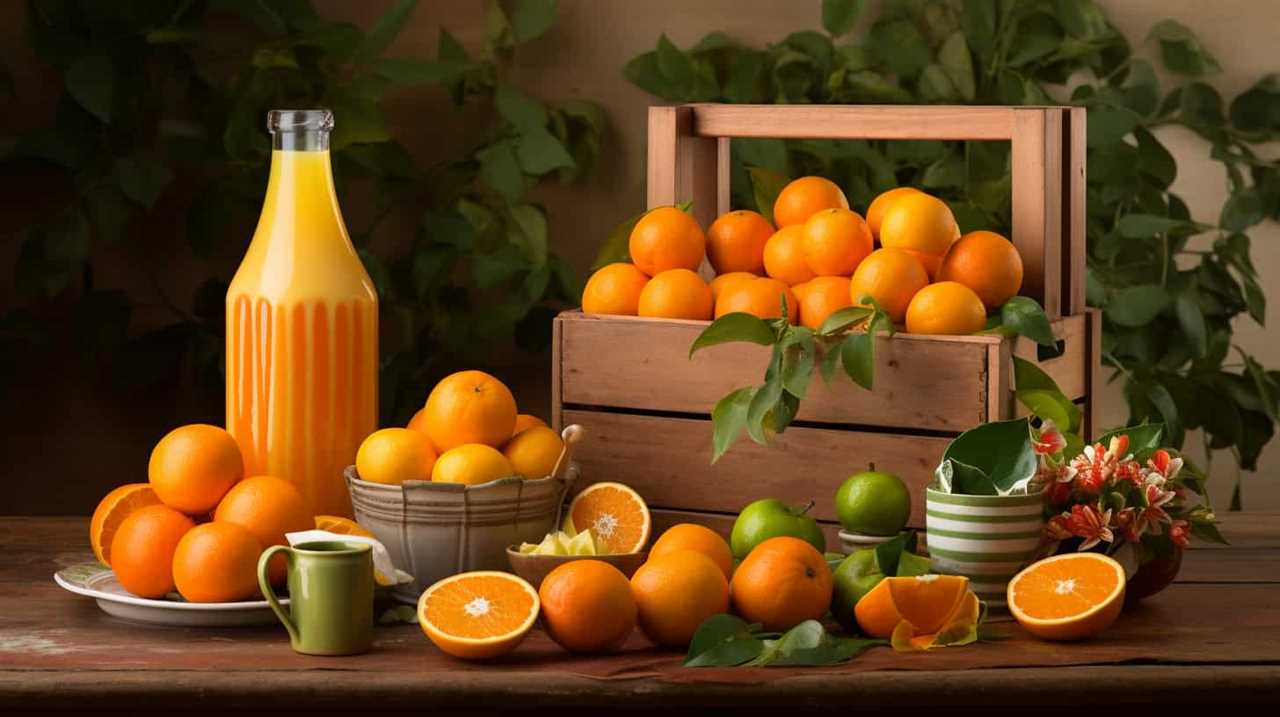
Now that we’ve adjusted the sweetness and tartness of our lemonade, let’s move on to serving and enjoying your refreshing glass of lemonade.
Serving and Enjoying Your Refreshing Glass of Lemonade
Now let’s sit back, relax, and savor our refreshing glass of lemonade.
When it comes to serving and enjoying this delightful drink, there are a few techniques and garnishing options to consider.
Firstly, serving your lemonade chilled is essential for maximum enjoyment. Ensure that you have chilled glasses or add ice cubes to the glasses before pouring the lemonade.

To add a touch of elegance, you can garnish your lemonade with a slice of lemon on the rim of the glass. For an extra burst of flavor, you could also add a sprig of fresh mint or a few berries.
Remember to gently stir the lemonade before serving to evenly distribute the flavors.
Now, take a sip, feel the refreshing tang of lemon, and let the sweet and tart flavors dance on your taste buds.
Cheers!
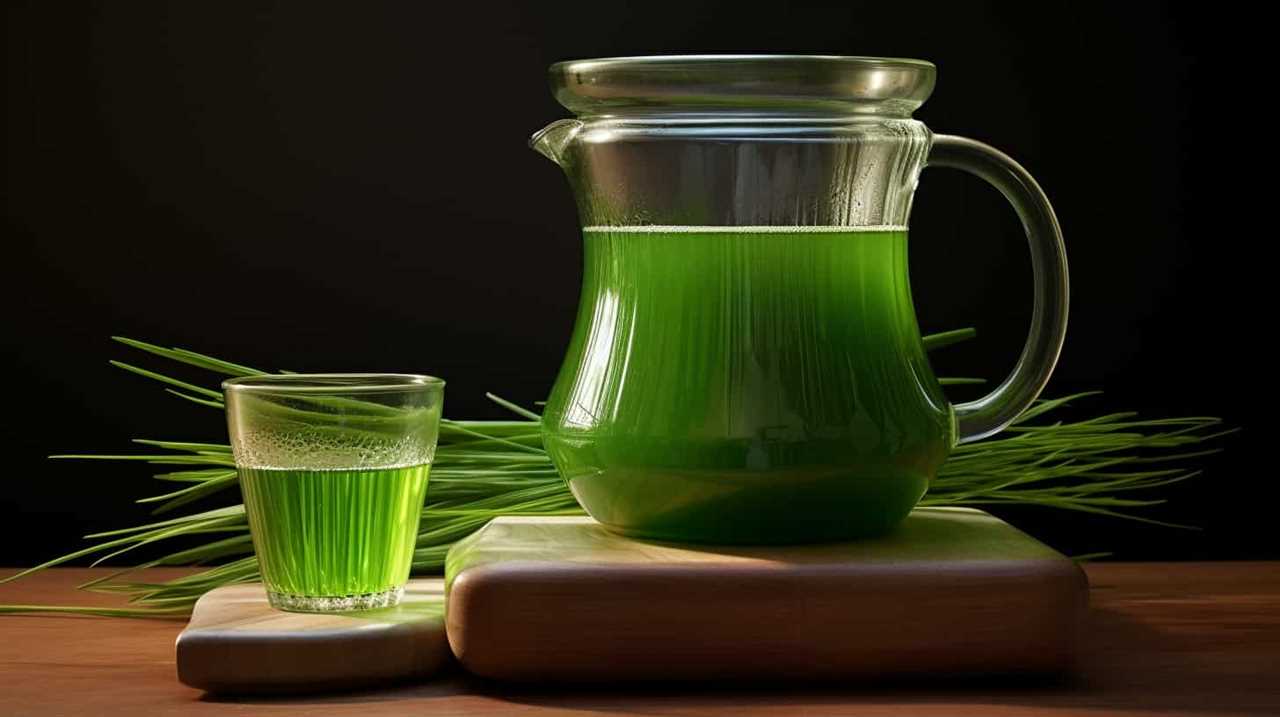
Frequently Asked Questions
Can I Use Fresh Lemons Instead of Bottled Lemon Juice?
Fresh lemons offer numerous benefits over bottled lemon juice. The taste of fresh lemons is unparalleled, providing a vibrant and tangy flavor. Incorporating fresh lemons into your lemonade will elevate its taste and give it a refreshing and authentic twist.
Can I Substitute Sugar With a Different Sweetener?
Substituting sweeteners in lemonade can enhance the flavor and offer health benefits. We’re knowledgeable about alternative sweeteners and can provide precise, detailed instructions on using them in place of sugar.
How Long Does the Lemonade Concentrate Need to Chill in the Refrigerator?
The chilling time for the lemonade concentrate in the refrigerator is typically around 1-2 hours. Using bottled lemon juice offers the benefit of convenience and consistent flavor for a refreshing glass of lemonade.
Can I Add Other Fruits or Flavors to the Lemonade?
Sure, we can definitely add different fruits or flavors to our lemonade. It’s a great way to experiment with unique flavors and create refreshing, personalized drinks. The possibilities are endless!

How Long Does the Lemonade Stay Fresh in the Refrigerator?
Lemonade made with bottled lemon juice can stay fresh in the refrigerator for about 5-7 days. To maximize shelf life, store it in an airtight container and keep it chilled.
Conclusion
And so, with a few simple steps and the right ingredients, a glass of refreshing lemonade is born.
Like a symphony of flavors dancing on your taste buds, this tangy elixir quenches thirst and brings joy on a hot summer day.
Just a sip transports you to a world of citrusy delight, where the sweetness and tartness blend harmoniously.

So go ahead, indulge in the art of lemonade-making and savor every drop of this sun-kissed nectar.
Cheers to the perfect glass of lemonade!
Susannah expertise lies in researching and compiling evidence-based content on juicing, nutrition, and overall health. She is committed to ensuring that The Juicery World offers accurate, up-to-date, and trustworthy information to empower readers to take control of their health. Susannah’s goal is to inspire individuals to embrace juicing as a way to nourish their bodies and live their best lives.
Juice Tips and Tricks
How to Know if Orange Juice Is Bad
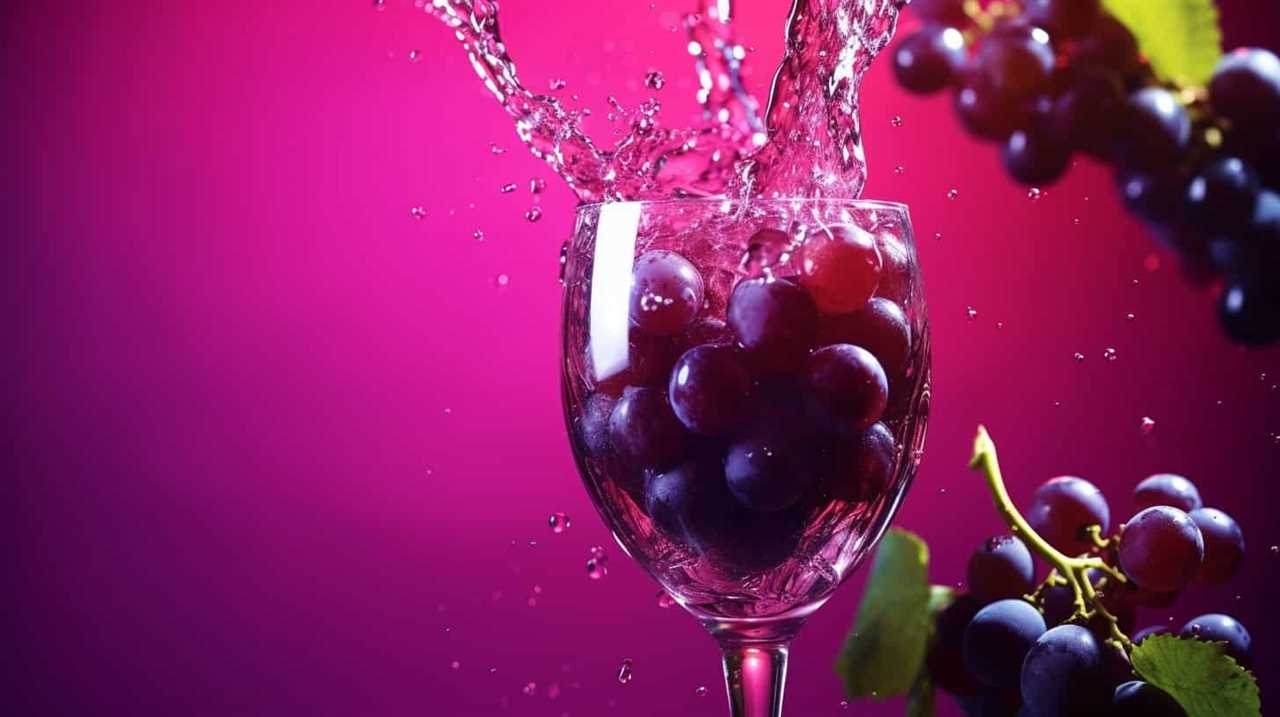
We’ve all been in that situation before – reaching for a glass of orange juice and hesitating, unsure if it’s still okay to drink. Fear not! This article will give you the knowledge you need to determine for sure if your orange juice is still fresh or if it’s gone bad.
With a blend of scientific precision and practical tips, we’ll explore color changes, strange smells, off taste, texture changes, and mold or growth that may indicate spoilage.
Let’s dive in and serve ourselves a refreshing glass of certainty!
Key Takeaways
- Color changes in orange juice can indicate a loss of freshness and shelf life extension, but it doesn’t necessarily mean the juice is bad.
- Unusual or off-putting odors in orange juice, such as sour or fermented scents, can be a sign of poor quality.
- An off taste in orange juice, such as sour, bitter, or fermented flavors, suggests that the juice is spoiled.
- Texture changes in orange juice, such as pulp separation or a thicker consistency, can occur as the juice ages, so it’s important to consume it before the expiration date.
Color Changes in Orange Juice
We should be aware that color changes can indicate whether orange juice is bad.
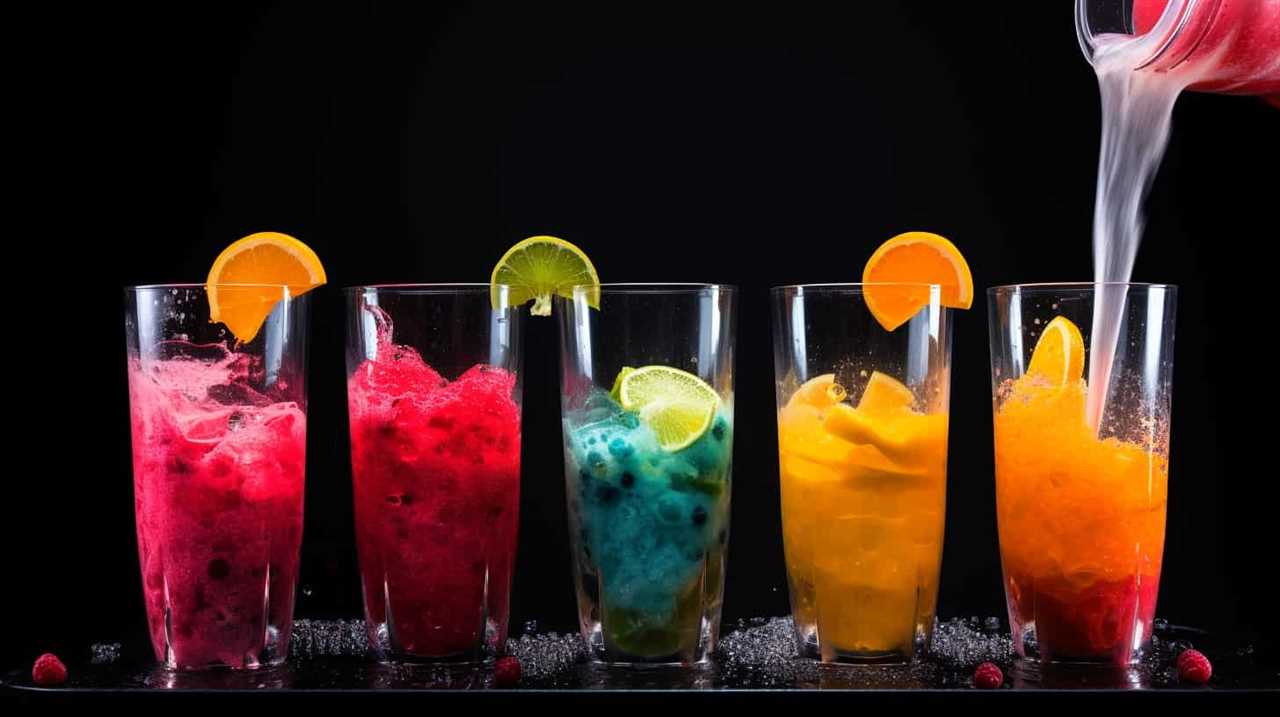
When it comes to orange juice, color is a crucial factor to consider. As oranges are exposed to air, an oxidation process occurs, which leads to changes in color. Fresh orange juice has a vibrant orange hue, indicating its freshness and high nutritional value.
However, as time passes, the juice may undergo a color change, turning dull or brownish. This change in color is a result of the oxidation process, which affects the flavor and quality of the juice. It’s important to note that while a change in color doesn’t necessarily mean the juice is bad, it does indicate that the juice is losing its freshness and shelf life extension.
Therefore, it’s advisable to consume orange juice when it’s at its freshest, as indicated by its vibrant orange color.
Strange Smells in Orange Juice
When it comes to evaluating orange juice, we should be cautious of any strange smells or odors. A fresh, pleasant smell is indicative of good quality orange juice. However, if you notice any unusual or off-putting odors, it may be a sign that the juice has gone bad. These smells can range from a sour or fermented scent to a rancid or moldy aroma.
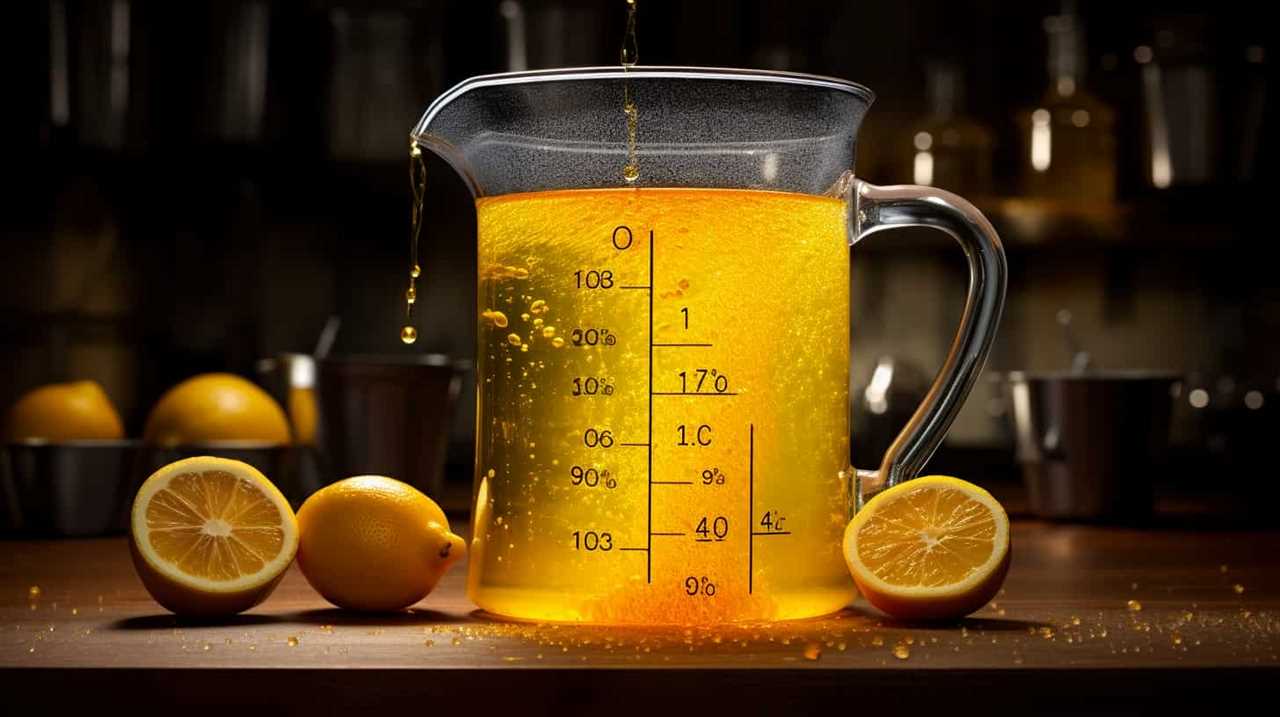
It’s important to note that while some natural variations in scent can occur due to the specific variety of oranges used, any strong or unpleasant smells should raise concerns. If you have citrus fruit allergies, it’s especially important to pay attention to the smell of orange juice, as it could indicate the presence of spoilage or contamination.
Ensuring the quality of orange juice is essential as it’s a popular beverage known for its health benefits, including being rich in vitamin C and antioxidants.
Off Taste of Orange Juice
Our taste buds can detect even the slightest hint of an off taste in orange juice, which can indicate that it has gone bad. The taste of orange juice should be fresh, tangy, and slightly sweet. If it tastes sour, bitter, or fermented, it’s likely spoiled.
One common cause of an off taste in orange juice is the use of overripe oranges. When oranges become overripe, their flavor profile changes, resulting in a less pleasant taste. Another factor to consider is the expiration date. Orange juice that has passed its expiration date is more likely to develop an off taste. It’s important to check the expiration date before consuming orange juice to ensure its freshness and quality.
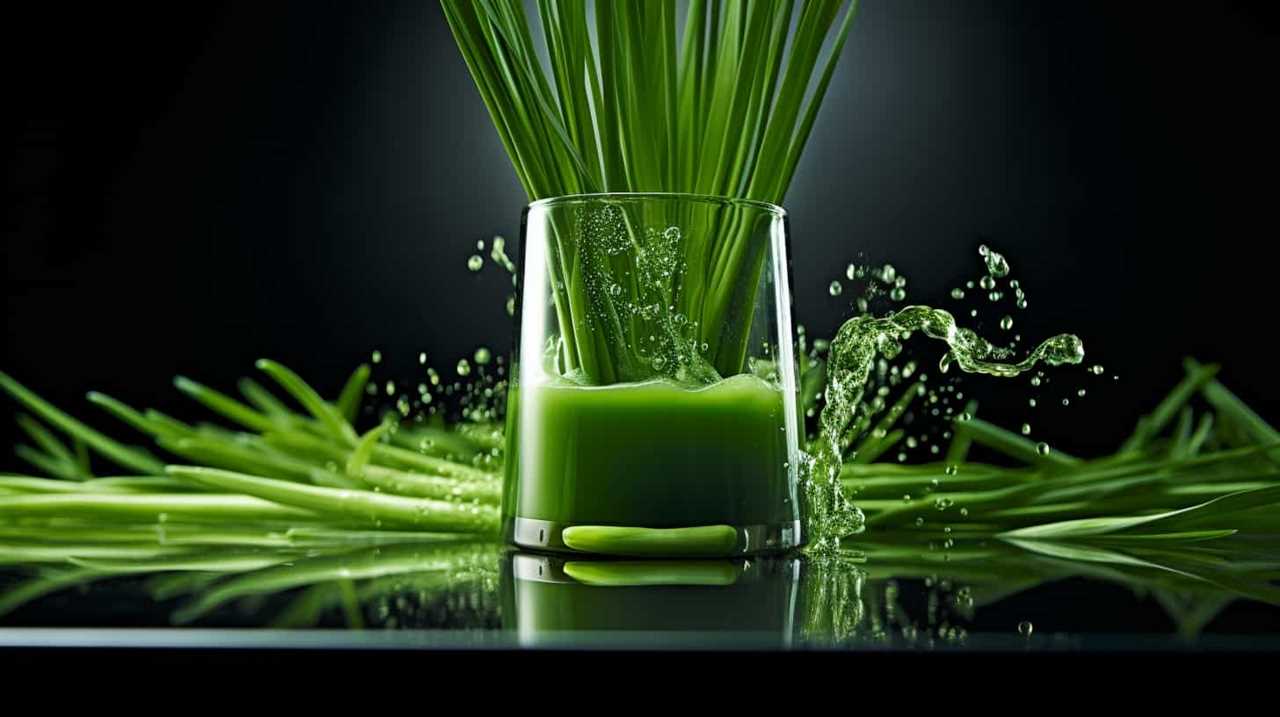
Now, let’s move on to discuss the texture changes in orange juice.
Texture Changes in Orange Juice
As we explore the texture changes in orange juice, it’s important to note that certain factors can cause it to become thicker or develop sediment. One common texture change in orange juice is pulp separation, where the pulp separates from the liquid and settles at the bottom. This can occur naturally over time, as the pulp particles become denser and sink.
Another factor that can affect the texture of orange juice is the expiration date. As orange juice ages, it may start to develop a thicker consistency and even form sediment. This is a result of the natural breakdown of the juice’s components. Therefore, it’s crucial to check the expiration date on orange juice and consume it before it reaches its expiration date to avoid any undesirable texture changes.
Mold or Growth in Orange Juice
We need to be aware of the possibility of mold or other growth occurring in orange juice. Mold can develop in orange juice if it isn’t stored properly or if it has passed its expiration date.
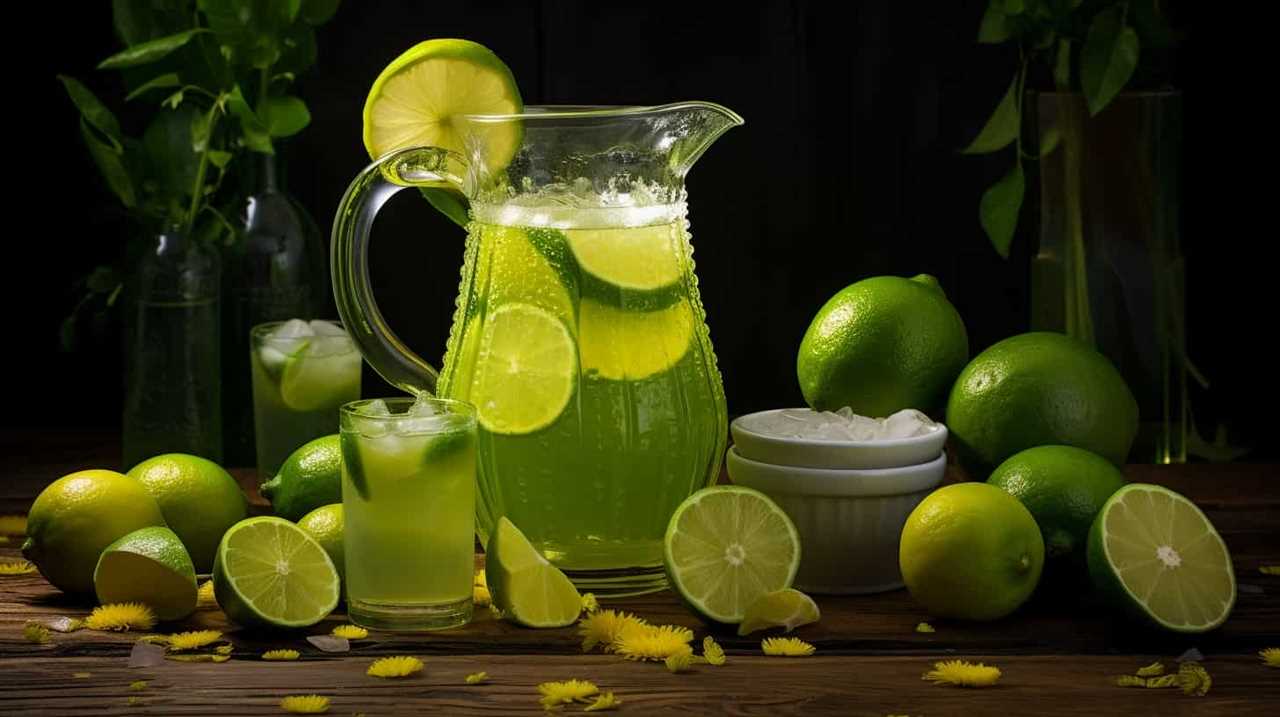
To prevent mold growth, it’s important to follow these steps:
- Store orange juice in the refrigerator at a temperature below 40°F (4°C).
- Check the expiration date on the bottle before consuming. Discard any orange juice that has expired.
- Keep the container tightly sealed to prevent air and moisture from entering, as these can promote mold growth.
Regularly inspecting orange juice for any signs of mold or unusual growth is essential. If you notice any discoloration, a strange odor, or visible mold, it’s best to discard the juice to avoid any potential health risks.
Frequently Asked Questions
Can Orange Juice Go Bad if It’s Stored in the Freezer for Too Long?
Frozen orange juice can potentially lose its nutrients and change its taste if stored in the freezer for too long. It is important to check for signs of spoilage before consuming it.
How Long Can Orange Juice Stay Fresh in the Refrigerator Once It’s Opened?
Once opened, orange juice can stay fresh in the refrigerator for about 7-10 days. To maintain its freshness, store it properly by keeping it tightly sealed and at a consistently cold temperature.
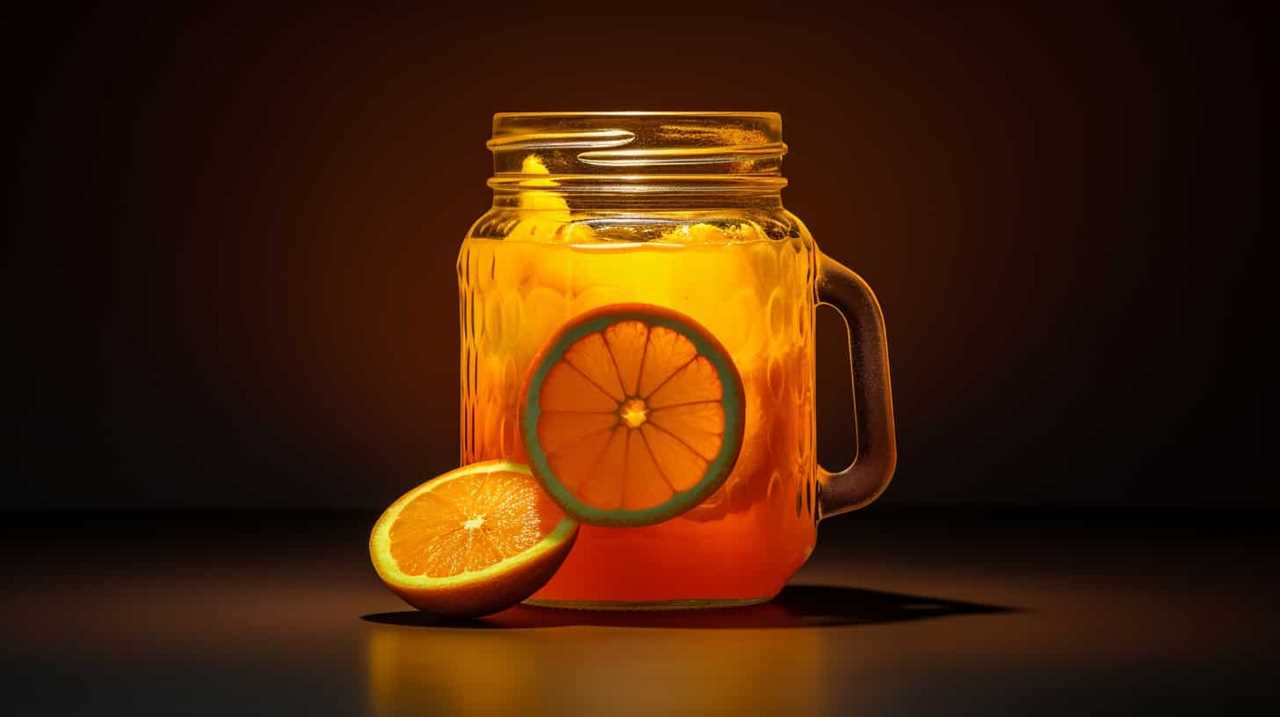
Is It Safe to Consume Orange Juice That Has Been Left Out at Room Temperature Overnight?
Left out orange juice may not be safe to drink as it can harbor harmful bacteria. Signs of spoiled orange juice include a sour smell, mold growth, and a change in color or taste.
Can Orange Juice Develop Harmful Bacteria if It’s Past Its Expiration Date but Still Looks and Smells Fine?
Orange juice can cause food poisoning if it develops harmful bacteria, even if it looks and smells fine. Signs of spoiled orange juice include a sour smell, mold growth, and a change in color or taste.
Does the Nutritional Value of Orange Juice Decrease as It Starts to Go Bad?
As orange juice goes bad, its nutritional value decreases. The longer it sits on the shelf, the more nutrients it loses. Signs of spoilage include a sour smell, off taste, and mold growth.
Conclusion
In conclusion, determining if orange juice is bad requires careful observation of color changes, strange smells, off taste, and texture changes. Just like a detective investigating a case, we must rely on our senses to detect any signs of spoilage.
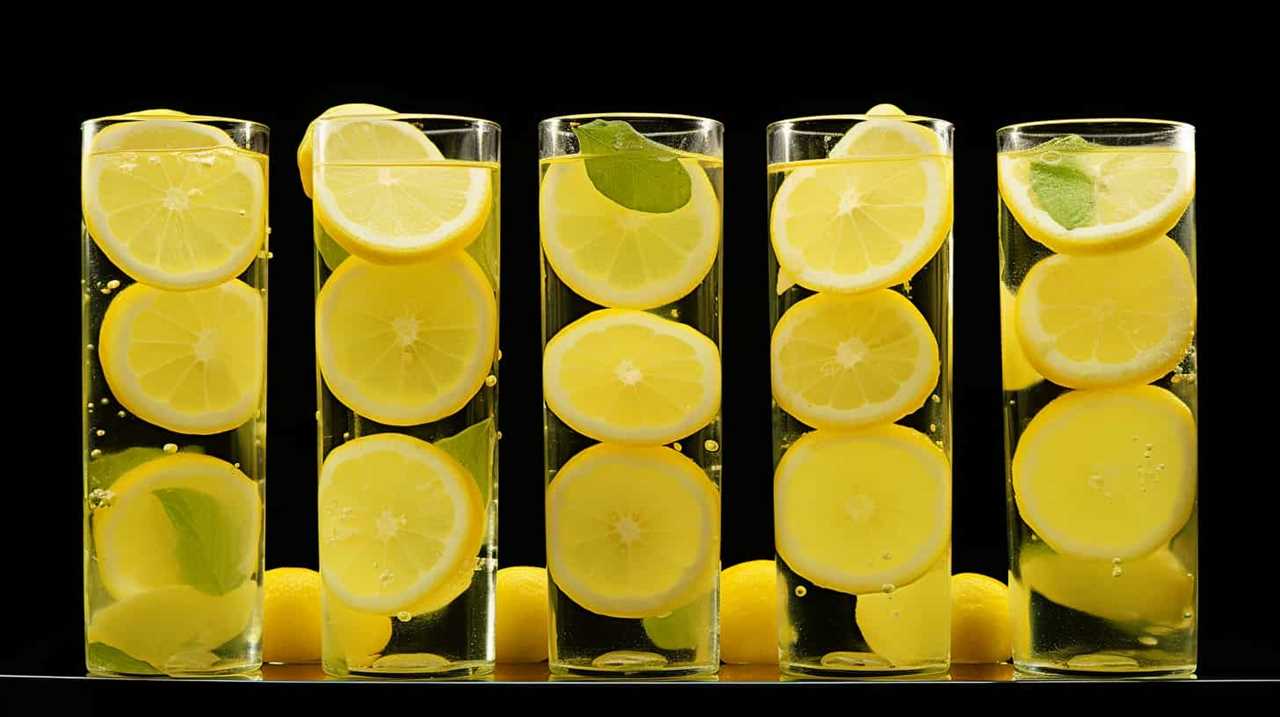
If we detect mold or growth in the orange juice, it’s a clear indication that it’s no longer safe to consume. By remaining vigilant and attuned to these indicators, we can ensure that our orange juice is always fresh and enjoyable.
Susannah expertise lies in researching and compiling evidence-based content on juicing, nutrition, and overall health. She is committed to ensuring that The Juicery World offers accurate, up-to-date, and trustworthy information to empower readers to take control of their health. Susannah’s goal is to inspire individuals to embrace juicing as a way to nourish their bodies and live their best lives.
-

 Juice Tips and Tricks3 months ago
Juice Tips and Tricks3 months agoHow Much Lemon Juice Is Equal To Half A Lemon
-

 Juice Tips and Tricks3 months ago
Juice Tips and Tricks3 months agoHow Long Can You Drink Orange Juice After The Expiration Date
-

 Fruit Juice Varieties3 months ago
Fruit Juice Varieties3 months agoTop 11 Most Loved Fruit Juice Varieties
-

 Juice Tips and Tricks3 months ago
Juice Tips and Tricks3 months agoHow Much Lemon Juice Is Equivalent To 1 Lemon
-

 Organic and Natural Juices2 months ago
Organic and Natural Juices2 months ago8 Best Organic Brands for Fruit Juice
-

 Juice Tips and Tricks3 months ago
Juice Tips and Tricks3 months agoHow Much Lemon Juice Is Equivalent To One Lemon
-

 Juice Manufacturing Process2 months ago
Juice Manufacturing Process2 months ago9 Best Steps in Industrial Juice Manufacturing Process
-
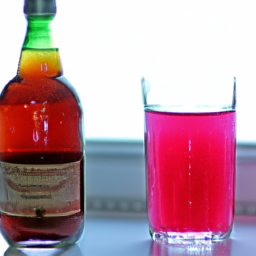
 Juice Tips and Tricks3 months ago
Juice Tips and Tricks3 months agoHow Long Does Cranberry Juice Last After Expiration Date



